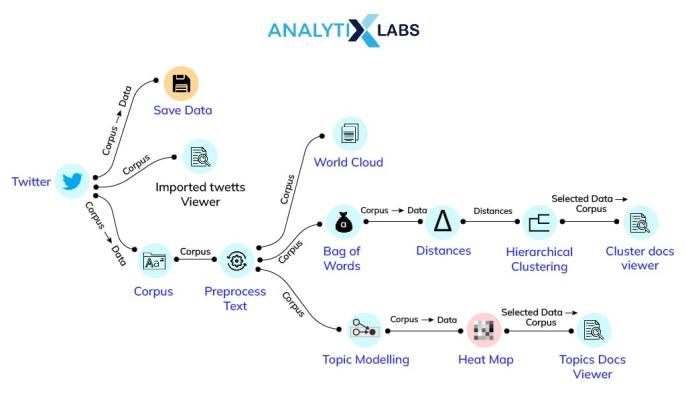How to do Twitter sentiment analysis without coding?
What is sentiment analysis?
Sentiment analysis is the
process of determining whether a piece of data shows a positive, negative or neutral
attitude towards a topic. In short, sentiment analysis reveals the sentiment behind
a piece of text. User experience, survey responses, and product reviews are all
frequent applications of it.
Due to the evolving nature of deep learning,
the ability of algorithms to analyze text is greatly enhanced. Advanced artificial
intelligence algorithms, when used properly, are valuable tools for detailed
research.
Sentiment analysis combines natural language processing (NLP) and
machine learning (ML) to translate the language people use to automatically generate
key insights.
In just 3 effective steps, you can apply sentiment analysis to
Twitter data without even coding.

Twitter Sentiment Analysis without Coding
Step 1: Define
sentiment categories
The main step is to set up all the common sentiment
triggers to define the categories into which each tweet can be categorized.
For
effective sentiment analysis of Twitter data, it is important to have the right
labels. To train an AI model, find generic sentiment labels such as positive,
negative, and neutral.
Then, dig deeper to find labels for each of these
emotions, such as happy, interested, and positively excited. On the other hand, set
disappointment, sadness, or anger for the negative labels.
Step 2: Find
the data for each form
The next step is to find the right data from
Twitter data mining. An efficient tweet sentiment analysis tool can accept different
forms of data, including text, PDFs and images.
You can use the inference
API to integrate your ML model to predict sentiment. You will initially need at
least two different labels and 20 data points to train the model. Depending on your
requirements, you can always manipulate the classification to get the desired
Twitter sentiment analysis.
Step 3: Explore the results
Finally,
you need to explore the results obtained by an AI model that uses NLP (Natural
Language Processing) to predict the sentiment of individual tweets or the entire
dataset.
For example, if there is a specific tweet about a restaurant that
says, I love their food, the sentiment analysis project will detect the word "love"
and categorize it as positive feedback.
Again, all of these results need to
be stored in Google Sheets and separated by date. You can then create a chart to get
a visual trend of the sentiment analysis of your tweets.
Frequently
Asked Questions
1. What kind of algorithms does Twitter
Sentiment Analysis use?
There are several types of algorithms that
can be applied to sentiment analysis of Twitter data. Some of the most effective
algorithms are Support Vector Machines (SVMs), Recurrent Neural Networks (RNNs),
Convolutional Neural Networks (CNNs), Random Forest, Naive Bayes, and Long
Short-Term Memory (LSTMs).
2. How to perform sentiment analysis in Python
Twitter?
Twitter sentiment analysis machine learning in Python is
done in three main steps. First, the Twitter API client is authorized, and then by
sending a GET request to the Twitter API (Tweepy), you can fetch potential tweets.
Finally, all data points (in this case, tweets) are parsed to classify them as
positive, negative, or neutral.
3. How to use Naive Bayes for Twitter
sentiment analysis?
According to the Naive Bayes algorithm, the
Twitter sentiment analysis dataset is classified according to the probability of a
specific category assigned to the text. It does this by using the joint
probabilities of words and classes in the analysis. However, the algorithm considers
each word to be independent of the others.
4. How to perform sentiment
analysis?
As the name suggests, sentiment analysis is a natural
language processing method under deep learning, where any text or image can indicate
the sentiment behind it. For example, sentiment analysis of Twitter data is done by
training a large dataset on commonly used positive, negative and neutral words.
These keywords can then be used to predict the complete sentiment of a sentence
through sentiment analysis methods.